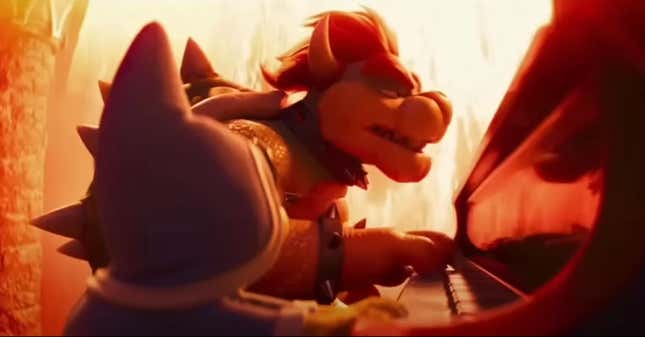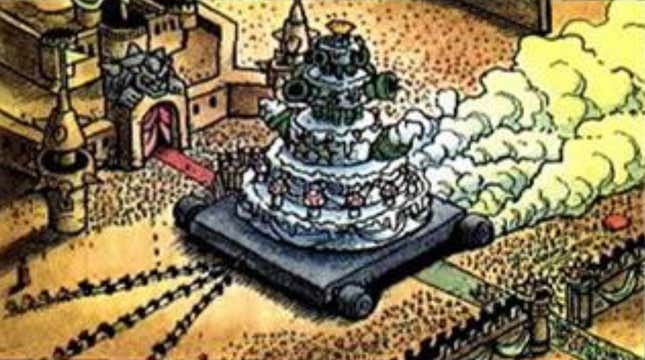
I watched The Super Mario Bros. Movie during its opening week with the intent of writing this Easter eggs and references article, only to realize that the movie is nothing but Easter eggs and references. A thorough roundup would be indistinguishable from a wholesale rundown of the entire movie.
The plot for The Super Mario Bros. Movie is paper-thin. Narratively, the characters are static bordering on inert; there’s no arc or growth to any of them. It’s just one action set piece to the next; your enjoyment is intimately tied to your pre-existing knowledge of these characters and your ability to recognize a parade of homages to Nintendo history.
It is, in other words, narratively identical to a Mario 2D platformer. Critics are complaining about the lack of characterization and depth in the Mario movie. But to paraphrase Gertrude Stein, there is no “there” there. We needn’t be so harsh.
Unlike HBO’s The Last of Us, which took its game’s cinematic aspirations to their logical conclusion, the Mario franchise’s brilliance has never been the plot; it’s been the gameplay. It’s been that perfect blend of inventive, instructive level design and hairpin controls.
Take that away, and we’re left with a reel of Easter eggs, which is exactly how this movie was intended. Here are 20 of the best ones that we spotted. Which one was your favorite?














